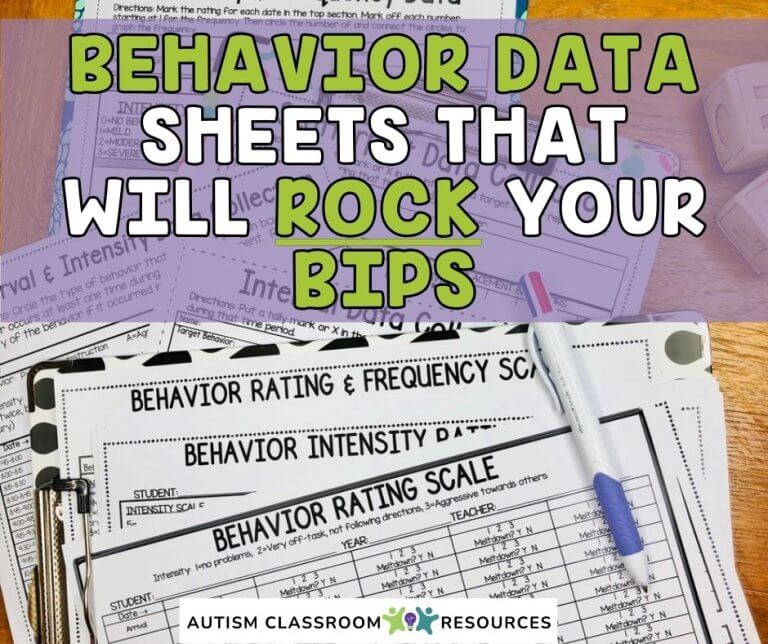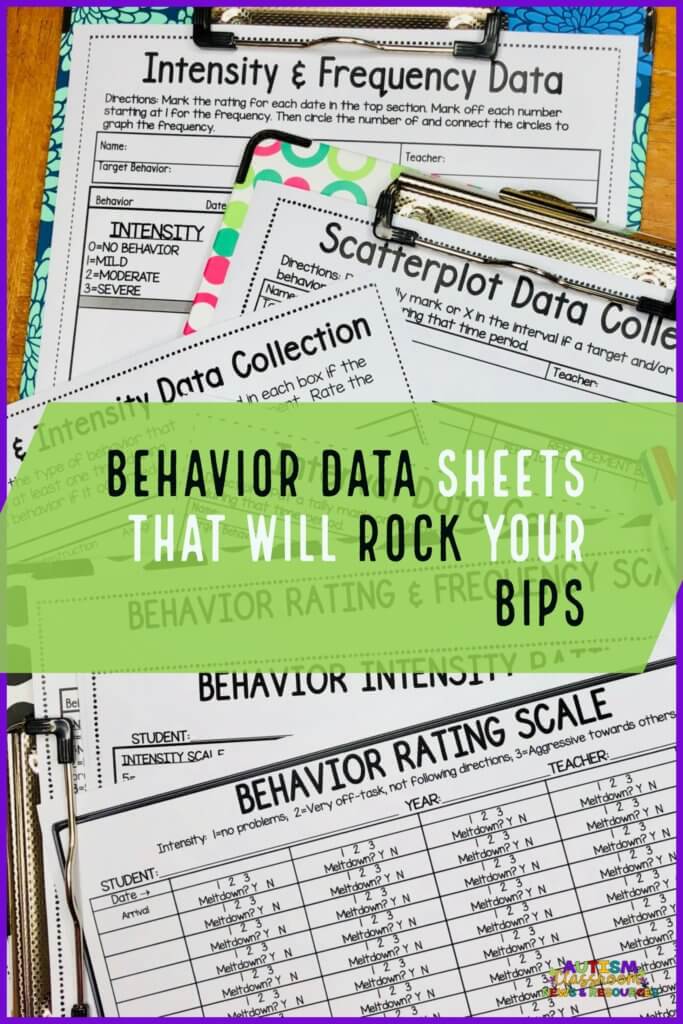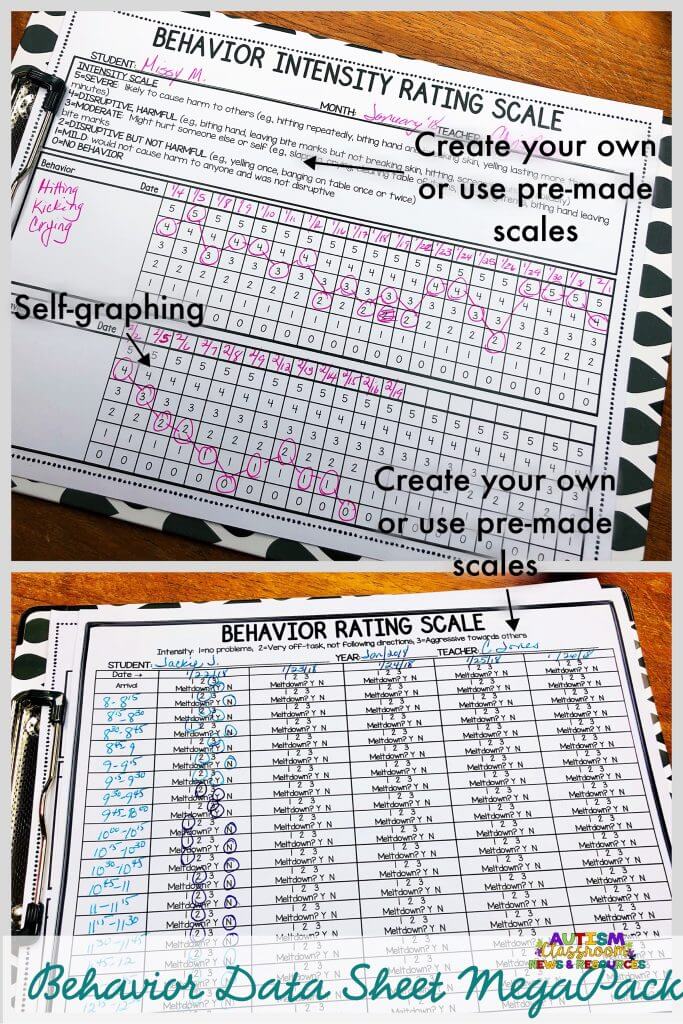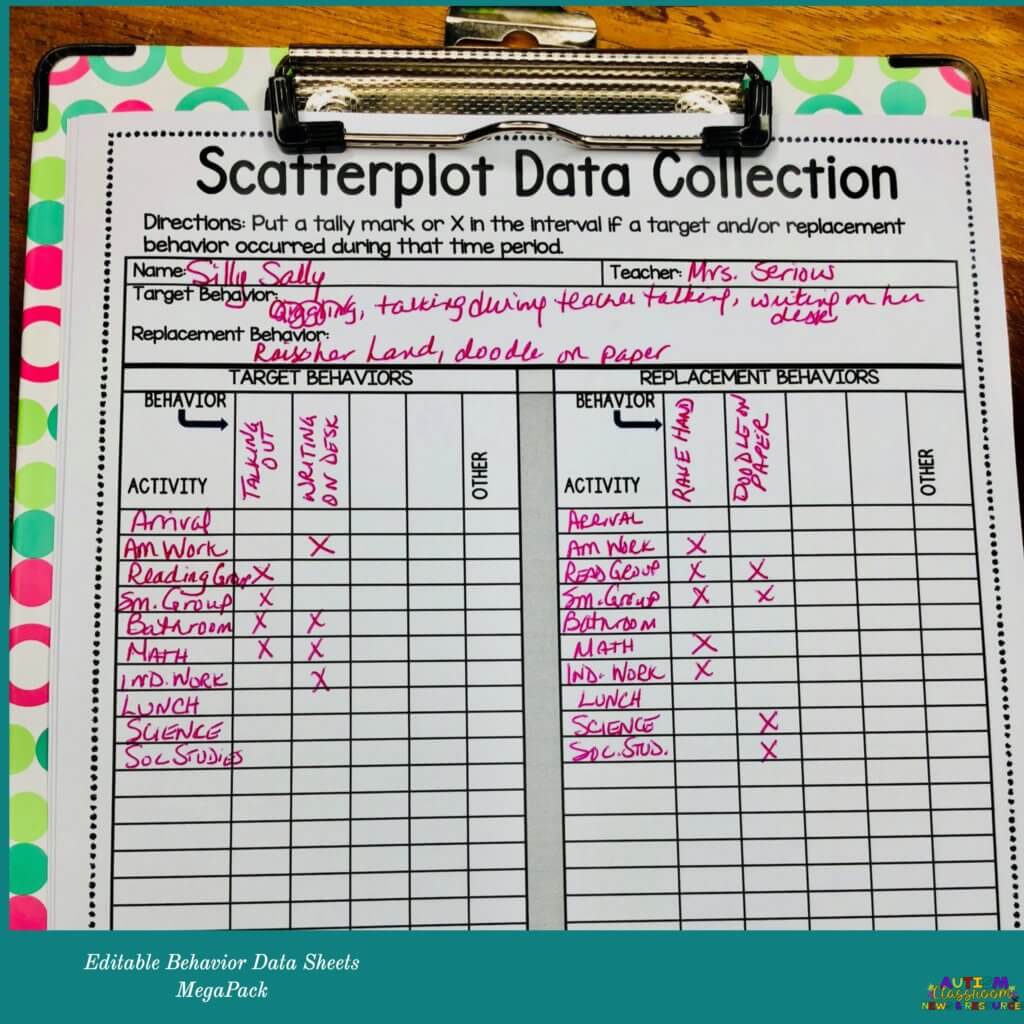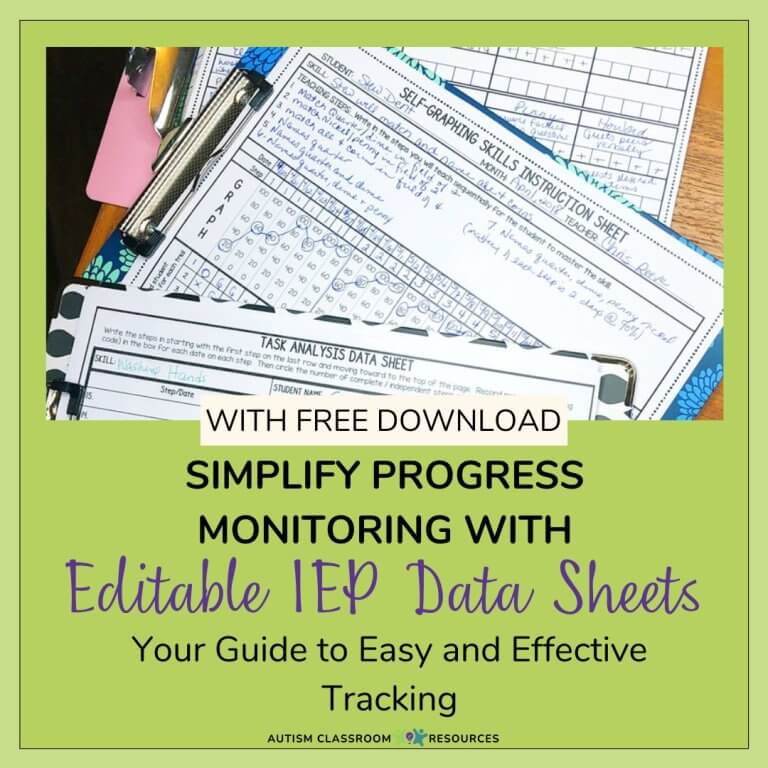Table of Contents
Is it possible to love behavior data collection sheets? I’ve already admitted I am a data geek. But now I think I have actually fallen in love with these behavior data collection sheets! Seriously!
You know why I love them? They are easy to use. And many of them graph as you go, so there’s no extra step for analyzing the data! What??
I know, I’m normally much more serious than this in a post, but, what can you do? So let’s look at some ways that you can simplify your behavior data collection!
BTW, you can purchase the data sheets by clicking on any of the photos–then choose to buy in my store or go over to my TpT store–your choice.
Rating Scales
Rating scales can be your best friend when all you need to do is have an assessment of whether your behavior interventions are working or not. These aren’t the kind of rating scales that you use to check off behaviors to indicate symptoms of autism or ADHD. They are anchored scales that you use to rate the level, severity, or frequency of behavior each day.
In the top picture to the right, the data points are easily connected to make a graph. I use them for:
- rating intensity or severity of behavior
- rating students’ level of anxiety or activity
- teaching students to self-monitor their own behavior and check ratings with adult observers
- track students’ ratings on the 5-point scale or have them graph it to self-monitor and assess
In the bottom behavior data collection sheet, you rate the day by 1, 2, or 3 of increasing problems. Then indicate if there was a meltdown that day. I designed it for a student who counting the behaviors in the classroom would be almost impossible and we found it to be pretty reliable.
You can also use the scales to rate every interval (e.g., 15-minutes), activity (using the sheet on the bottom of the picture), or daily or morning and afternoon (using the one on the top).
Included in the behavior rating scales are the two in the picture above and 5 additional ones. All are editable so you can create your own scales or use ones I created.
You can purchase the data sheets by clicking on any of the photos–then choose to buy in my store or go over to my TpT store–your choice.
Combining Frequency and Ratings
You can also combine rating scales with other measures like frequency or interval data sheets (see below). I love this behavior data collection sheet because it’s so flexible.
- You can color in the squares (bottom to top) to graph the frequency of data
- OR put a rating of the severity of the behavior (or anxiety, or 5 points scale or something else) in each box instead and you still have a bar graph. But then you can also track that measure by counting up the ratings.
Combining Interval Systems and Ratings
In addition to combining frequency and intensity ratings, you could also combine interval and intensity data.
This form does not self-graph. But you can track 3 specifically defined behaviors through a partial, whole or momentary interval system AND rate each interval with problem behavior by the severity of the problems.
I realized that I’ve never talked about interval data on the blog, but I’ll fix that in the coming weeks. Essentially interval data is when you monitor the behavior in set intervals. Sometimes they are times, sometimes activities.
In partial interval data, you check to see if the behavior occurred in any part of the interval. Momentary interval data assesses if the behavior occurs at a specific time (e.g., the end) of the interval. And whole interval is recording the behavior if it occurs throughout the whole interval. Partial interval systems, in particular, are useful for taking data in a classroom because you record the behavior in the interval it occurs in and are not tied to watching the student faithfully through the whole time.
ABC Behavior Data Collection Sheet
And a set of behavioral data sheets wouldn’t be complete without antecedent-behavior-consequence (ABC) data sheets. I’ve included some journal ones, including this one on the top. It has some rating scales to assess setting events that might affect behavior. I’ve also included those that don’t have those scales.
The one on the bottom is a check-off ABC form and there are lots of options with these. They can be printed as a full page (with 2 incidents recorded) or in index card size to be more portable and one incident per page. For a fast ABC summarizing hack, check out this post.
Other Behavior Data Collection Sheets Included
And, I’ve included about 5 different behavior data collection sheets of just interval data sheets as well.
And there are Scatterplot behavior data collection sheets with and without replacement behaviors as well as with times or activities.
You can check out the behavior data collection sheets below. Want more information about behavioral data collection? Check out this post.
Buy Behavior Data Sheets (Here or on TpT)
![Behavior Data Sheets: PowerPoint and Google Slides; add student information; 6 types of data collection; 36 variations of data sheets [picture behavior intensity rating scale with data collected]](https://autismclassroomresources.com/wp-content/uploads/2022/06/Behavior-Data-Sheets-Cover-6-2-25-768x768.png)
Behavior Data Sheets – Editable Behavior Tracker MegaPack for Special Ed & RTI
Looking for behavior data sheets that can make data collection easier? If you need tools for functional behavior assessment or monitoring behavior support plans, this

